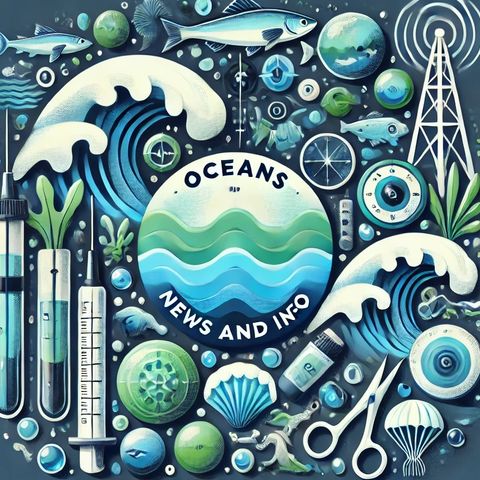Coral Reef Veterinarians: Safeguarding Coastal Communities from Hurricane Devastation

Download and listen anywhere
Download your favorite episodes and enjoy them, wherever you are! Sign up or log in now to access offline listening.
Coral Reef Veterinarians: Safeguarding Coastal Communities from Hurricane Devastation
This is an automatically generated transcript. Please note that complete accuracy is not guaranteed.
Description
As climate change intensifies, safeguarding coastal communities from hurricanes has become an urgent priority. Often overlooked in these protective efforts is the critical role of coral reefs, nature’s bulwark against...
show moreCoral reefs are known as the rainforests of the sea, bustling with life and biodiversity. They function as natural barriers, dissipating wave energy and reducing coastal erosion, which significantly diminishes the damage wreaked by storms. However, they are under threat from a recent adversary, the stony coral tissue loss disease.
U.S. Geological Survey (USGS) biologists are leading efforts to combat this disease, which has alarmingly spread across the Florida Reef Tract and beyond. To understand this disease's insidious nature, these biologists meticulously examine coral polyps and algal cells through microscopes, tracing the disease's trajectory and impact.
Stony coral tissue loss disease is a particularly destructive affliction, causing lesions that progressively consume coral tissue. The disease strikes quickly and with devastating effect, severely weakening reef structures. The ramifications of this are profound: as corals perish and structural integrity is compromised, so too is their ability to protect shorelines from wave energy. The degradation of these natural barriers increases the vulnerability of coastal communities to hurricanes and other severe weather events.
The emergence of coral reef veterinarians underscores the need for innovative approaches to reef conservation. Tasked with diagnosing and treating afflicted corals, these specialists apply methodologies analogous to those in human and animal medicine. For instance, interventions may include administering antibiotics directly into corals or developing probiotic treatments to bolster coral resilience against pathogens. The ultimate objective is to foster reef recovery and fortify these ecosystems, therefore reinforcing their protective function.
Furthermore, the work of USGS biologists extends beyond the microscope. Their research is pivotal in informing conservation strategies and management practices. By mapping disease prevalence and identifying coral species most at risk, they provide crucial insights that support targeted interventions. Collaboration with local stakeholders, environmental organizations, and governmental bodies amplifies these efforts, leading to comprehensive action plans aimed at reef restoration and sustainability.
The health of coral reefs is a barometer of the ocean’s vitality. Their decline is emblematic of broader environmental shifts and serves as a clarion call for increased conservation efforts. As the battle against stony coral tissue loss disease continues, the symbiosis between scientific research and practical conservation measures becomes ever more vital.
Innovative strategies, like the introduction of coral reef veterinarians, exemplify the adaptive measures needed to preserve these ecosystems. In safeguarding coral reefs, we not only protect marine biodiversity but also fortify our coastal communities against the ever-present threat of severe weather. This intersection of environmental health and human safety highlights the broader, interconnected impact of efforts to combat coral diseases. The work done today by biologists and conservationists is critical, influencing not just the fate of coral reefs but also the future well-being of countless communities worldwide.
Information
| Author | QP-4 |
| Organization | William Corbin |
| Website | - |
| Tags |
Copyright 2024 - Spreaker Inc. an iHeartMedia Company
